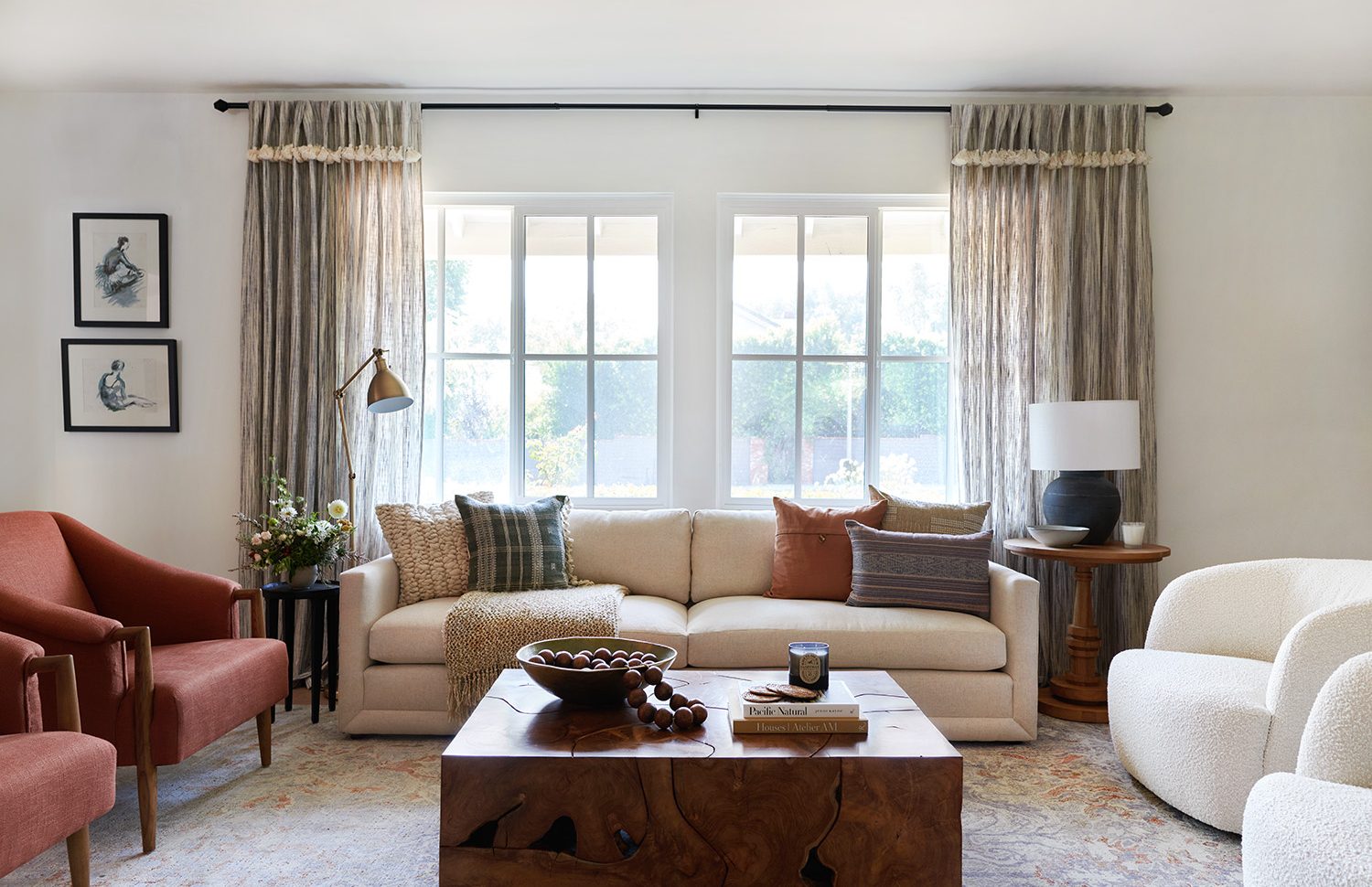When it comes to putting the finishing touches on your home, window treatments reign supreme. A well-dressed window can be the difference between a sophisticated and well-designed room, or one that feels incomplete, lackluster, or simply not right. Window treatments work double duty — they not only enhance your room’s aesthetic, but your quality of life as well. From privacy to light control to adding some serious detailed design, they should be considered an important budget line item from the onset.
However, that’s not to say that window treatments are particularly straightforward or easy to understand. Any trip to Bed Bath & Beyond will tell you that there are endless styles, materials, colors, shades, and more to choose from. So, we took it upon ourselves to do a full explainer on this important design decision.
Ahead, find everything you need to know about window treatments and window treatment ideas, courtesy of the Havenly design team:
Window Treatments 101: Function
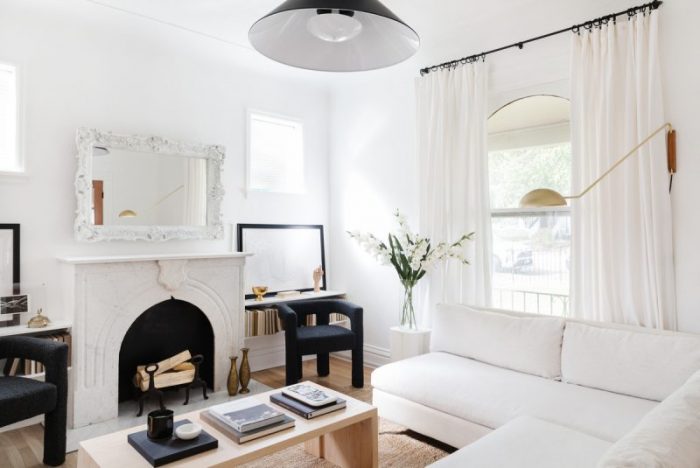
First things first: there are roughly six types of window treatments, all of which have a unique function and offer a different degree of privacy. Here’s a quick breakdown of each:
- Curtains and drapes are the same thing and refer to fabric panels hung from a drapery rod above a window. Fabrics range from cotton, hemp, and linen to velvet, silk, and polyester and may include a liner for extra light filtration. Sheer curtains are thin and almost completely see-through, opaque curtains are thicker and block more light, cotton-lined curtains provide even more shade, and blackout curtains let minimal light through. They’re commonly used in bedrooms!
- Roman shades are crafted from a fabric like cotton or linen. They can be installed inside the window mount or just outside of it, and lift up and down with a cord or other mechanism. They also range from sheer to blackout, depending on your desired privacy.
- Roller shades are crafted from polyester and vinyl-based material. They’re installed on a rod at the top of your window, and you can pull the material up and down to reach your preferred level of privacy. They also range from sheer to blackout, depending on your desired privacy.
- Blinds have a lifting mechanism similar to shade, and are normally crafted from heavier materials like vinyl, wood, or bamboo. They also range from sheer to blackout, depending on your desired privacy.
- Valances are horizontal fabric shades that can be paired with any of the above window treatments. Their intended purpose is to conceal curtain rods.
- Shutters are attached outside of the window for a more traditional look, and you can open or close them as you see fit.
Window Treatments 101: Measurements & Installation
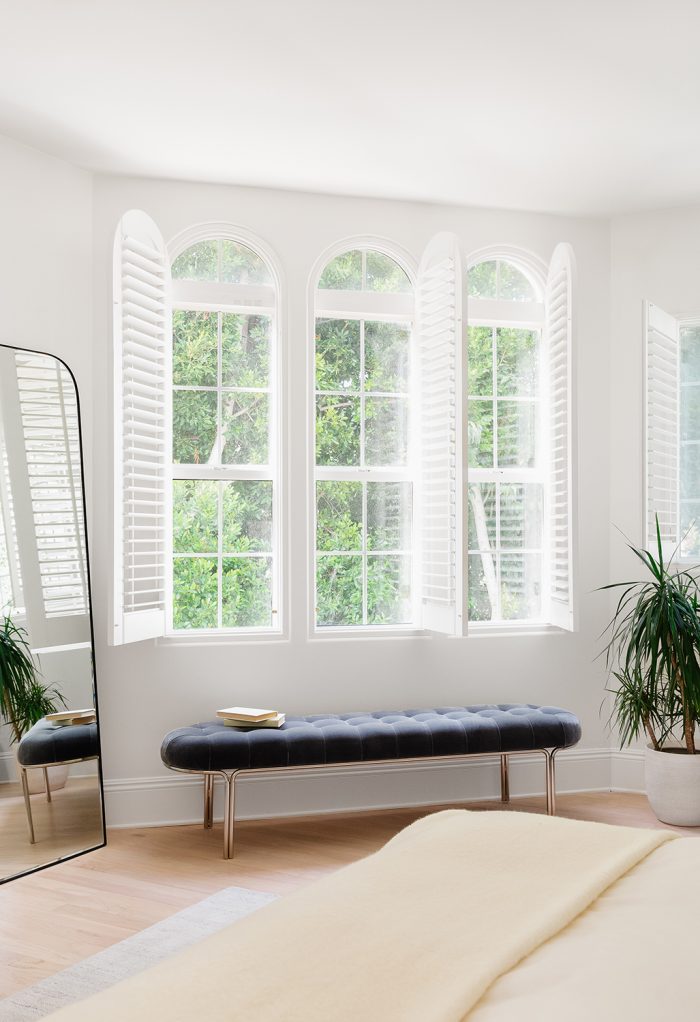
Now for the technical part. No matter what your chosen window treatment style, always measure your windows at least two or three times before hitting the purchase button. Keep these standard measurements in mind before putting hammer to nail:
- Drapes and curtains typically come in standard lengths and should always be hung high and wide. As a general rule of thumb, hang your curtain rod six inches above the frame, and extend it six to 12 inches beyond the frame on either side. This maximizes the flow of natural light and can actually make your room appear bigger. The fabric should barely graze the ground when hung correctly, or they can puddle a bit for a more dramatic look. Pro tip: if your windows are in between standard curtain sizes, opt for the longer length and hem them!
- Shades and blinds are typically custom ordered to fit your windows perfectly. Your chosen vendor will provide specific measuring instructions for your preferred covering, whether it’s a roman shade or standard blind. Blinds are always mounted inside the window frame, while shades can be hung inside or out, depending on the look you’re going for. For any inside mounts, always measure to the nearest quarter-inch to ensure there are no sunlight gaps on the sides.
Window Treatments Ideas: Color & Pattern
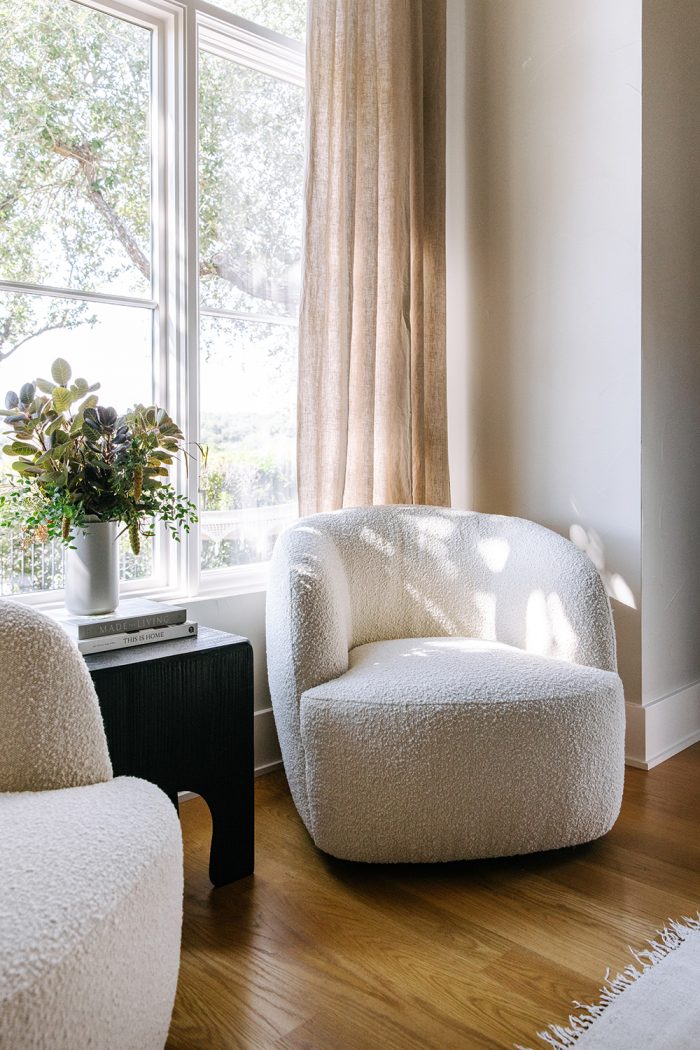
For wood blinds or shutters, it’s best to match that to the trim you already have inside your home. If you have a maple trim, maple wood blinds with the same stain will feel seamless. If you have white trim, a painted white wood or resin will help everything feel cohesive.
For cellular shades, you can’t go wrong with a simple white or ivory to complement the existing warm or cool palette in your space! They’re supposed to blend in with the natural light and surroundings.
For drapes and curtains, consider blending the shades with your chosen paint color for a tone-on-tone look. For example, white panels on white walls or sandy linen panels on beige walls (hung high and wide, of course) can make your windows feel large and seamless. You can of course opt for a fun pattern or bold color, but keep in mind that you’ll likely have to change out these curtains more often as your style and decor changes.
Window Treatment Ideas: Layering
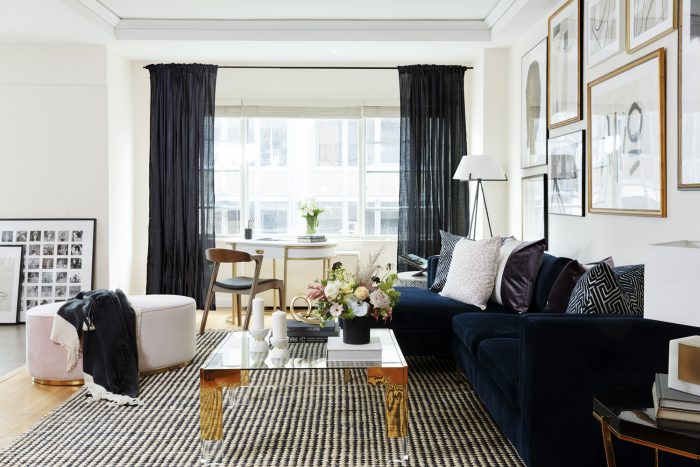
And now, for the fun part: layering. This is what really makes window treatments feel polished, custom, and design-forward. Generally speaking, layered window treatments typically involve curtain panels hung high and wide, coupled with cellular shades or blinds hung inside the window frame. The key is to tailor your window treatments to your exact aesthetic and lifestyle needs in each room.
For example, a toddler with a 7pm bedtime all but needs a nursery with blackout shades and curtains, while sheer-on-sheer curtains and blinds in a well-lit living room can make the room feel even more light, bright, and airy.
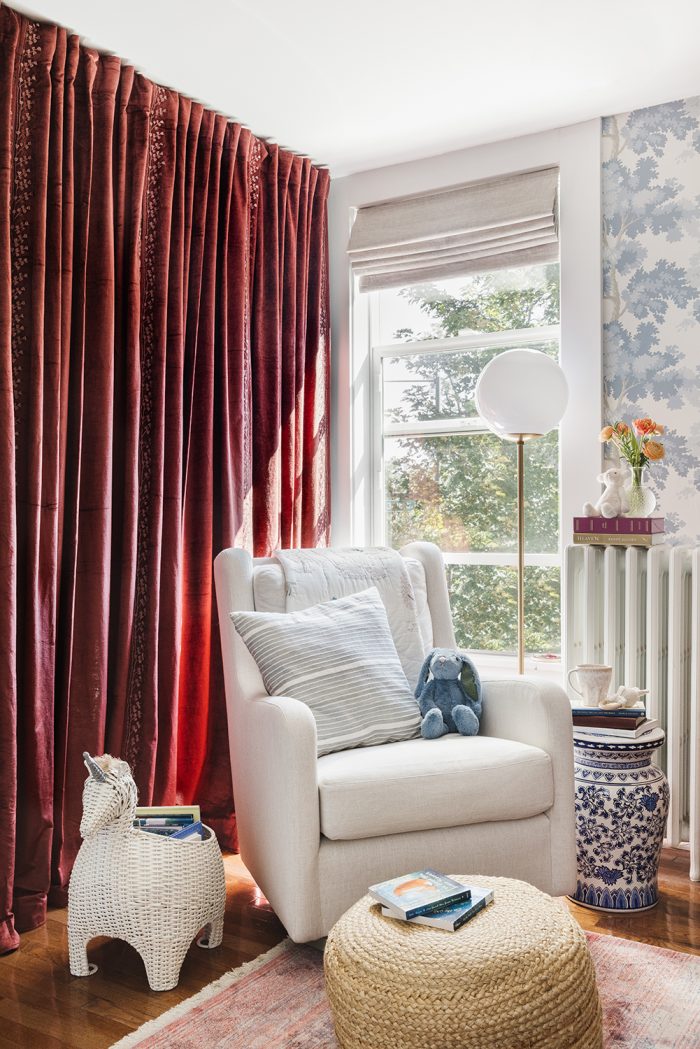
If you love the neutral, sheer curtain look but need a pop of natural texture, pair them with woven or bamboo blinds. If you have nosy neighbors and a small yard, consider sheer curtains and opaque blinds to be able to control your privacy.
All in all, always use your window treatments to alter the ambiance, privacy, and look in each room. With layered treatments, you can create a very customized look and feel suited to each individual space, all without paying for custom anything. Win-win.
Looking for a way to overcome your unique home dilemmas? Work one-on-one with our expert interior designers for just $129 per room. Get started today with our style quiz.

